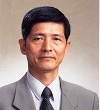|
|
 |
|
|
Core and Information Technology Center |

Atsushi Kara
Professor |

Masamichi Hashimoto
Visiting Professor |

Vitaly Klyuev
Associate Professor |
|
As represented by the Japan Gigabit Network (JGN), a national project for research and development of advanced information network technologies, research on high-speed networking are actively promoted world wide. In response to these developments, Core and Information Technology Center (CITEC) was founded at the University of Aizu in April l999. At the center headed by Dr. T. Ikegami, intensive research and development are conducted for a five year period, focusing on the basic and applied technologies of the next-generation super high-speed networks. In particular, as one of the connection sites of the JGN national project, the University of Aizu is working with various research institutions connected to JGN on research and development of basic and applied network technologies including applications for distance education, medical and nursing care, and e-commerce for the realization of the advanced information and communication society.
In 2002, CITEC started a new distance education project. University of Yamanashi and CITEC have collaboratively established a JGN link between them in order to conduct a regular class (Network and Security) for the graduate school of University of Yamanashi from University of Aizu. The lectures are transmitted using Dr Aiguo He's RIDEE (Real-Time Interactive Distance Education Environment) system with MPEG2 and H.323 video conferencing. The high quality interactive communication made it possible to give near real-class quality lectures successfully.
CITEC is also leading agovernment-funded project Secure Network for Remote Patient Monitoring in collaboration with Aizu Liaison Office, 200X, and Ainet. A proof-of-concept system was developed and the industry-academia consortium is nowworking hard on marketing and commercialization.
|
| [vkluev-01:2002] | V.V. KLUEV. A Model of Relevance Feedback for Distributed Information Retrieval. WSEAS Transactions on Systems, 2(1):145-147, 2003.
The aim of the relevance feedback model presented here is to applyaccumulated users knowledge in searching for text information. The information retrieval system keeps individual feedback from users, determines appropriate documents and expands the initial user queries using terms from titles of these documents. |
| Referred Proceeding Papers |
| [vkluev-02:2002] | V.V. KLUEV. Results Merging in a Distributed Search System. In Editors Nikos N. Mastorakis, Vitaliy V. Kluev, editor, Advances in Communications and Software Technologies. Proceedings of The Second WSEAS International Conference on Multimedia, Internet and Video Technologies, pages 172-177. WSEAS,WSEAS Press, Sep. 2002.
Mechanisms of results merging in a distributed search system have been discussed in this paper. Such mechanisms aims are to select the most relevant documents retrieved by different servers and put them on the top of the list returned to the end user. In our calculation, we use the clustering technique to divide retrieved results into several homogeneous groups and a metric on the base of the vector space model to arrange items inside each group. The main thrust of our approach is both the proposed clustering metric and the ranking metric. Ourmechanismshave been implemented in the OASIS system, a system which belongs to the distributed search systems in the Internet. |
| [hashi-01:2002] | Masamichi Hashimoto. A study of electronic commerce community network. In Hokuriku Joint conference of Institutes of Electrical Engineers,2002, page 390, Sep. 2002. |
| [vkluev-03:2002] | Vitaliy KLUEV. OASIS at NTCIR-3: Monolingual IR Task. In Working Notes of the Third NTCIR Workshop Meeting. Part 2: Cross Lingual Information Retrieval Task, pages 153-158, Tokyo, Oct. 2002. National Institute of Informatics, National Institute of Informatics.
We participated in the monolingual Japanese and English information retrieval tasks. Results of our experiments using the OASIS system have been presented in this article. Our aim was to check the reliability of pseudo-relevance feedback. Our strategy attempted to select the best terms from the top ranked documents and to expand the initial user query using them. Four automatic runs were submitted for each task. Two of them were done using relevance feedback; and other two were carried out without any feedback. We gained nothing regarding retrieval improvement in our test with query expansion. |
| [vkluev-04:2002] | Vitaliy KLUEV. Web Search Experiments Using OASIS. In Working Notes of the Third NTCIR Workshop Meeting. Part VI:WEB Retrieval Task, pages 47{50, Tokyo, Oct. 2002. National Institute of Informatics, National Institute of Informatics.
The major aim of participating in the Web Retrieval Task was to test OASIS to see how well the system supports Japanese Web search. The 10-gigabyte data set was used in our experiments. Because OASIS is a distributed system we simulated distributing data. The collection was divided into ten independent subsets. Results showed that someimprovements in the indexing strategy have to be done. |
| [vkluev-05:2002] | Vitaliy V. Kluev Nikos N. Mastorakis, editor. Advances in Communications and Software Technologies. WSEAS Press, 2002. |
| [vkluev-06:2002] | V. Kluev, September 2002. Co-Chairman, The SecondWSEASInternational Conference on Multimedia, Internet and Video Technologies , Skiathos, Greece. |
|